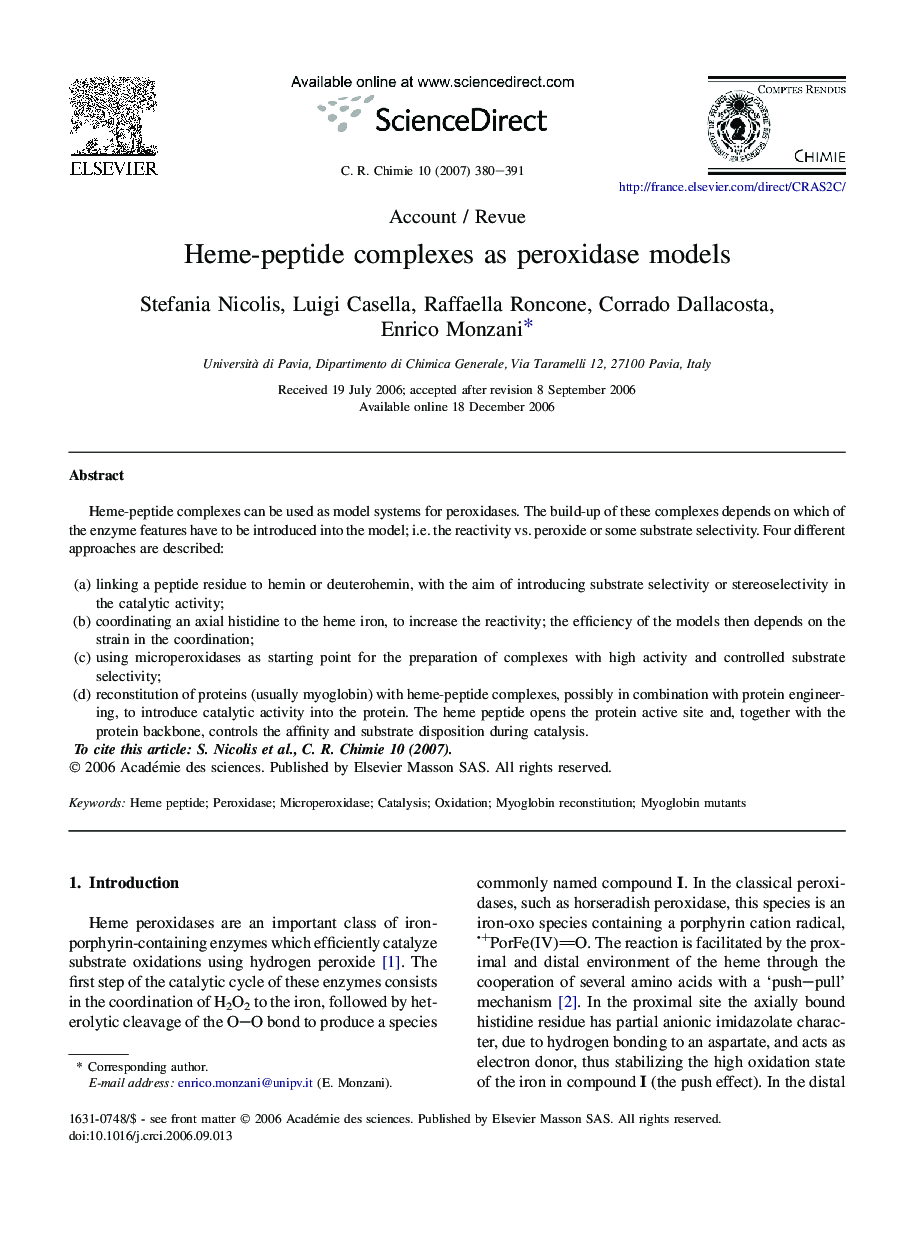| Article ID | Journal | Published Year | Pages | File Type |
|---|---|---|---|---|
| 171081 | Comptes Rendus Chimie | 2007 | 12 Pages |
Heme-peptide complexes can be used as model systems for peroxidases. The build-up of these complexes depends on which of the enzyme features have to be introduced into the model; i.e. the reactivity vs. peroxide or some substrate selectivity. Four different approaches are described:(a)linking a peptide residue to hemin or deuterohemin, with the aim of introducing substrate selectivity or stereoselectivity in the catalytic activity;(b)coordinating an axial histidine to the heme iron, to increase the reactivity; the efficiency of the models then depends on the strain in the coordination;(c)using microperoxidases as starting point for the preparation of complexes with high activity and controlled substrate selectivity;(d)reconstitution of proteins (usually myoglobin) with heme-peptide complexes, possibly in combination with protein engineering, to introduce catalytic activity into the protein. The heme peptide opens the protein active site and, together with the protein backbone, controls the affinity and substrate disposition during catalysis.
